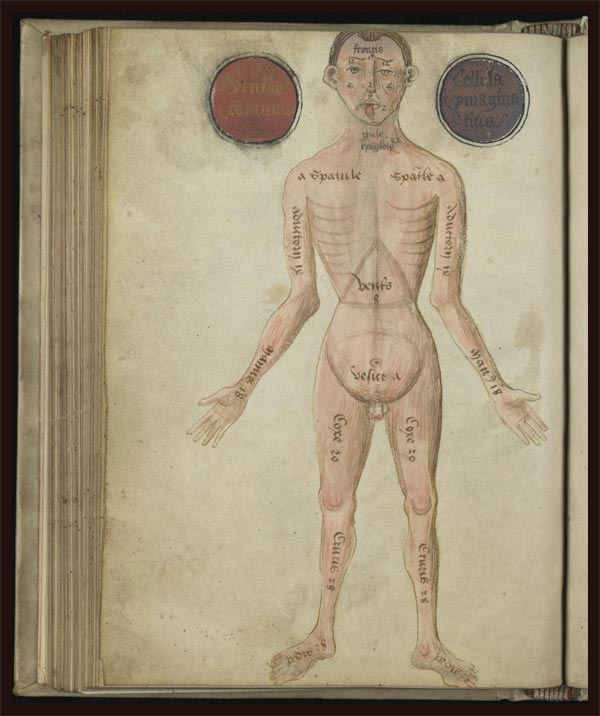This manuscript contains two treatises, whose Latin originals can be traced to the twelfth and thirteenth centuries. An anatomical manual wrongly attributed to Galen (1r–41r) is followed by a short manual, likely originated in Salerno, about internal organs based on the dissection of a pig (41v–48v). At the end of the manuscript are eight color illustrations of the human body (49v–53v) of which we have included two that depict the body with the main parts: ventral (49v) and dorsal (50r). While the text is in English, the illustrations keep the original Latin anatomical terminology. In contrast to the previous manuscript, these drawings are fairly naturalistic, and it has been suggested that they were the models for Johannes Ketham’s Fasciculus medicinae, first printed in 1491.
Pseudo-Galen
To zoom in, hover over the image with your mouse
Anatomia England; mid-15th c. Manuscript codex on vellum; 180 x 130 mm MS. 290. Courtesy of the Wellcome Institute Library, London


